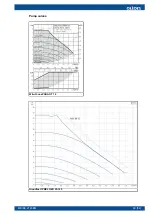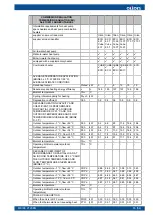
5 Operation
5.1 Heat pump operation
The system’s connection diagrams are provided as a separate document.
The heat pump collects heat from the fluid in the brine circuit and releases the heat
collected through a condenser and into heating water. In addition to the heat pump
itself, CUBE heat pump units include an in-line heater for supplementary and backup
heating. In ECO models, the in-line heater is an optional accessory.
After being pumped through the condenser and the in-line heater, the heating water is
led either into a domestic hot water tank or the building’s heating circuit (depending on
the position of change-over valve FV202). When the change-over valve is in position A,
heating water circulates inside the unit, heating up the water in the domestic hot water
tank. In position B, heating water circulates through the building’s heating circuit.
Condenser pump P201 circulates heating water through the heat pump. If the building’s
heating system does not include a buffer tank (or there is only a flow-through tank
in the heating water flow line), the condenser pump also serves as the pump for the
building’s space heating circuit. In this direct connection configuration, the pump is
always on, except for the summer season, when heating is not required. During the
summer period, the system regularly starts the pump and lets it run for a while to check
the heating circuit’s temperature and prevent the pump from seizing up.
If the configuration includes a buffer tank, the heating water circulates only between
the tank and the heat pump. If the heating system includes a buffer tank, each heating
circuit has its own pump. Another case where a heating circuit has its own pump is
when the system has no buffer tank but the heating circuit includes a 3-way valve for
regulating the circuit’s temperature. In configurations with a buffer tank, the brine pump
will run only when the tank is being heated.
The unit’s automation system controls the compressor and in-line heater based
on the configured heating water setpoint value. This setpoint value is compared to
the actual flow temperature (measured by sensor TE202). Both the domestic hot
water heating and the building heating circuit have their own setpoint values. For
domestic hot water heating, the setpoint value is determined by adding an offset to the
desired domestic hot water temperature. The actual domestic hot water temperature
is measured by sensor TE266. For space heating, the setpoint value is determined
by the flow temperature provided by the heating curve configured in the system.
The flow temperature value provided by the heating curve may depend either only
on the outdoor temperature or, if indoor temperature measurement is enabled, the
combination of both the indoor and the outdoor temperature.
If there is no buffer tank, space heating will start when the flow temperature falls below
the temperature provided by the heating curve by the number of degree minutes. The
unit will continue to heat the building’s spaces until the flow temperature rises above
the temperature provided by the heating curve by the number of degree minutes.
In configurations that include a buffer tank, it is the temperature in the tank that
38 (54)
M8006 2123EN
















































